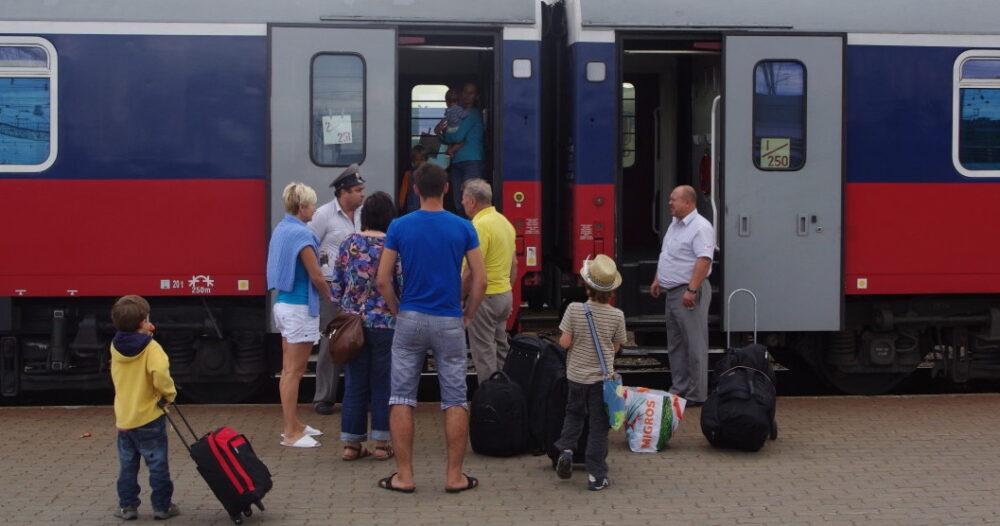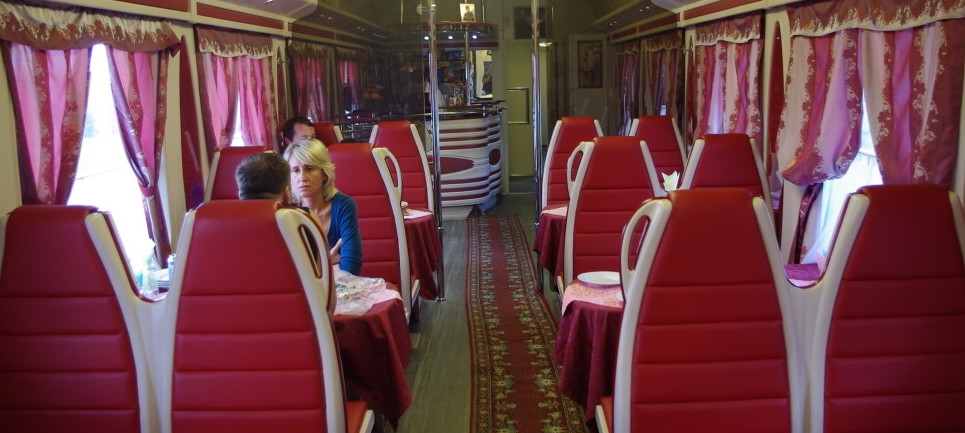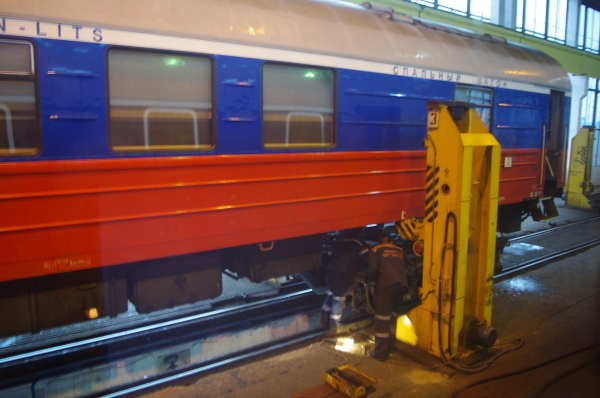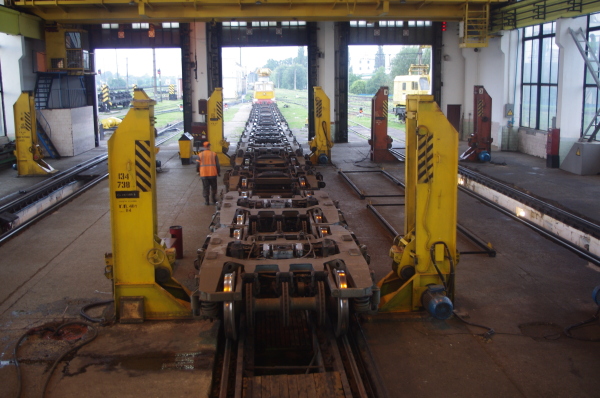An Old Tsar’s Tale Debunked.
Many rail fans know that the gauge of the track changes at the Russian border. It widens from the international standard of 4 feet 8.5 inches to about 5 feet. I had been told that the reason for the difference was to delay any invading army at the Russian border because, presumably, it would take an invading army some time to convert their rail equipment to the wider gauge.
On my 2011 trip to Russia, getting there from Berlin on a Russian train was quite a relaxed experience. Nevertheless, I was eager to learn how the difference in track width would be handled when our train reached the Russian border.

In this photo, passengers are looking for the right rail car to find their accommodations.

The dining car was my introduction to the Russian habit of effectively blocking an view of the passing scenery by hanging multiple sets of draperies on the windows. The kitchen is a small area in the far left of this photo.
As soon as I was seated, the waiter/chef appeared with two menus. He held up one, enclosed in a fancy vinyl cover, and said, in a loud voice, “MONEY!” Then he held up the second menu, which was a single sheet of paper in a clear plastic sleeve. “NO MONEY!” he announced. I took this (correctly) to mean that I would have to pay for anything ordered from the fancy menu, but items on the second sheet were included my fare.

My lunch arrived within a few minutes and was not great, but certainly good fo the circumstances. And, of course, the German been was excellent.

I awoke the next morning to an unusual motion of the train and discovered that we were inside a great long shed, each rail car stopped in exactly the right spot so that a hydraulic jack was correctly positioned at each corner of the frame on each car. And, as I watched, the rail car was lifted enough to separate itself from the two trucks—that is, the wheel assembly—referred to here on the Continent as a bogie.
Then the old bogies were wheeled away toward the front of the train when, from the rear . . .

. . . a new set of bogies—with a little more than three inches wider axel—were rolled in from behind us and, once the cars had been lowered into place, quickly secured.
Then the four other cars—three sleepers and the diner—were brought in and positioned where we had been sitting and the process was repeated.
So much for the military deterrent theory, if that indeed what was behind the idea of the wider distance between rails. The bogies on an eight-car train were changed in less than 40 minutes, and were were moving again, on our way to Moscow, in under an hour.


